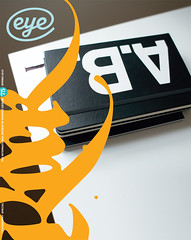Spring 2010
A botanical garden of graphics
Regular Graphic Design Today
Gestalten, £46, €49, $75Regular Graphic Design Today provides a thorough overview of the basic interests and styles of recent printed matter, with a selection of work that captures the core of young designers from Amsterdam to Lausanne to London.
‘Regular’ here can be understood in several senses. On the one hand, as editor Robert Klanten tells us, it refers to ‘current conventional graphic design’: no semiotic squabbling, no obsessive contextualisation – just graphic design. The aim is to shift the focus away from selection criteria to the work itself. On the other hand, ‘regular’ is a deliberate absence of a considered critical position, a decision that only emphasises the difficulties of formulating a comprehensive analysis of the present moment. Apart from François Rappo’s preface, the text is factual but rarely insightful, while the accompanying designer biographies are more interesting but equally dry. This anachronistic style of reportage reminded me of Renaissance treatises such as Vasari’s Lives or Alberti’s On Painting, but today we can no longer assume an encyclopedic undertaking is ‘godly’ in itself. In its third sense, ‘regular’ aptly describes the book’s pace. Each page is evenly filled with images, but the regularity of the rhythm has a lulling effect that makes it difficult to focus on any one.
This is particularly unfortunate because the images themselves are crisp, and every single work depicted could warrant an entire discussion: from the dried-up marker fonts of Marco Müller to the visible / invisible magazine covers of the Raffinerie AG für Gestaltung. to the lively projects of Household, to the geometric revivals of Tobias Roettger.
The large number of self-initiated or academic projects, such as Régis Tosetti’s L’art de la chasse or Mathias Clottu’s ‘Custom Things’, testifies to the complexity with which designers explore their surroundings. Particularly affecting is Clottu’s ‘Old and Rare’ project, a proposal for tagging historical books in a library. Each volume has been wrapped in a cream paper jacket, subtly colour-coded by epoch, which contains the requisite information but does not cover the entire height of the book, emphasising the differences between them. The jackets protect, but they also expose, and in doing so, get at the heart of such a library’s function in society today.
Perhaps the documentary approach of Regular Graphic Design Today’s text and the archival structure of its content were meant to balance this botanical garden of images, delicate in their miniature form and liable to be contaminated by argument. Still, especially as designers take increasing stakes in ‘meaning’, their work warrants close examination, ambitious criticism and genuine debate.
First published in Eye no. 75 vol. 19 2010
Eye is the world’s most beautiful and collectable graphic design journal, published quarterly for professional designers, students and anyone interested in critical, informed writing about graphic design and visual culture. It is available from all good design bookshops and online at the Eye shop, where you can buy subscriptions and single issues.

